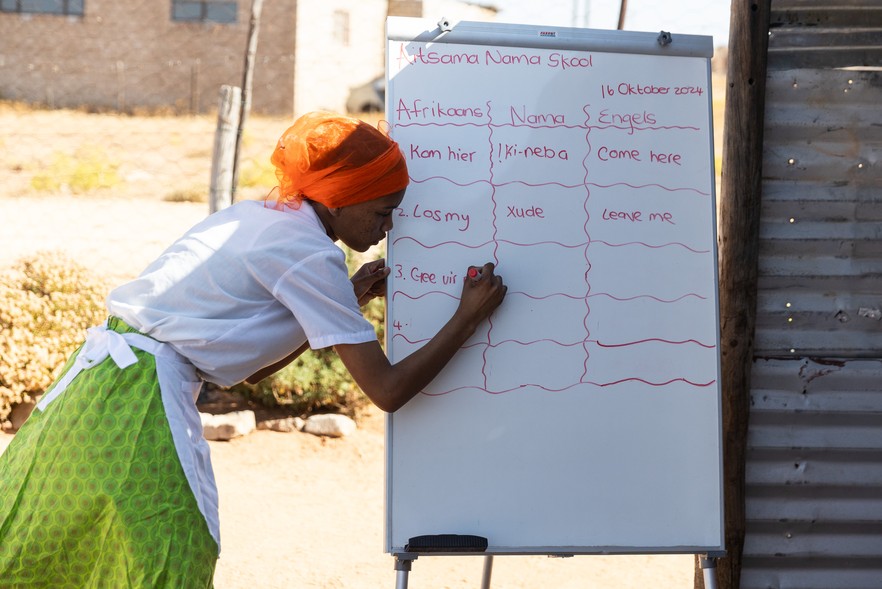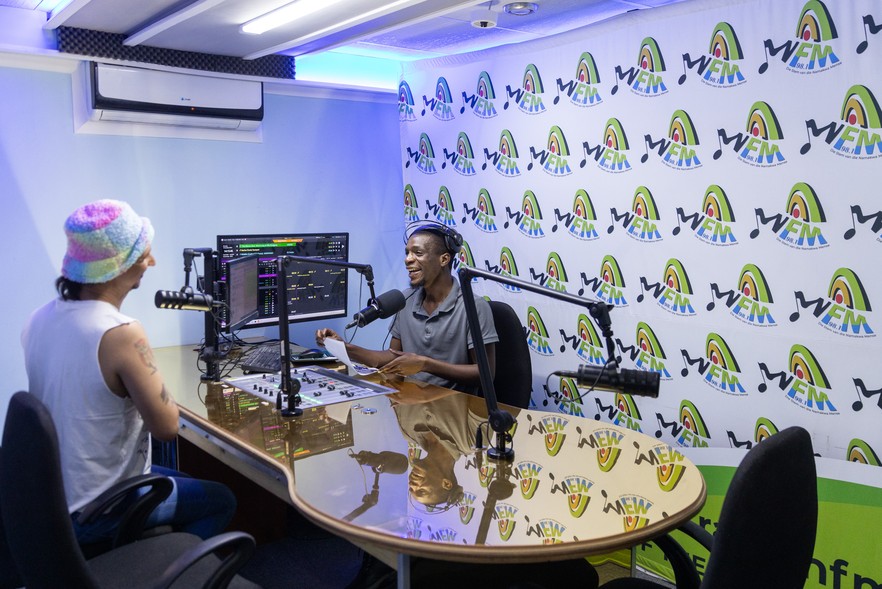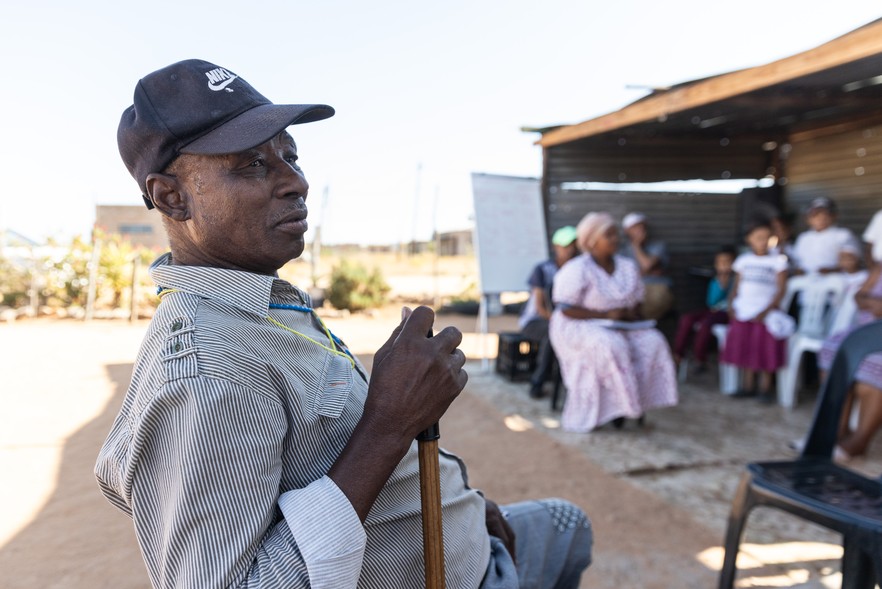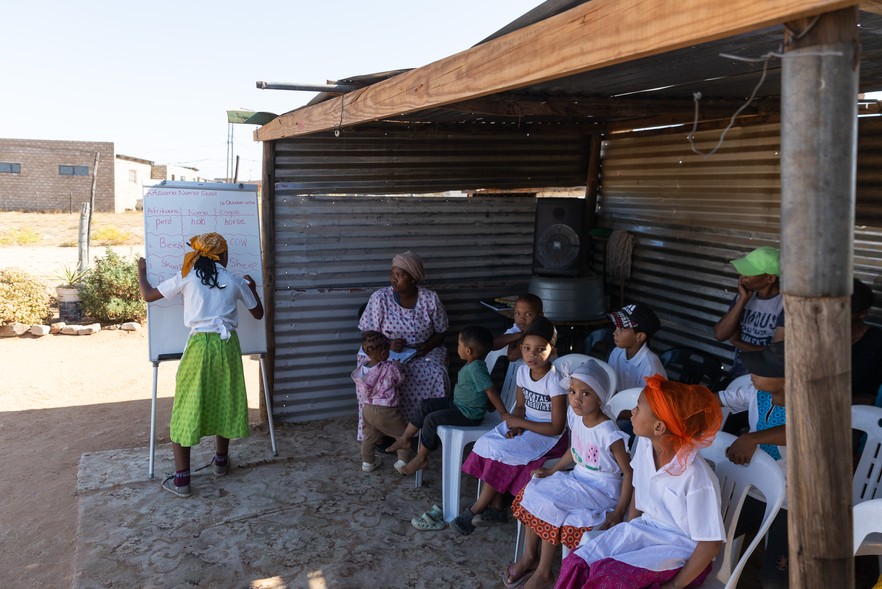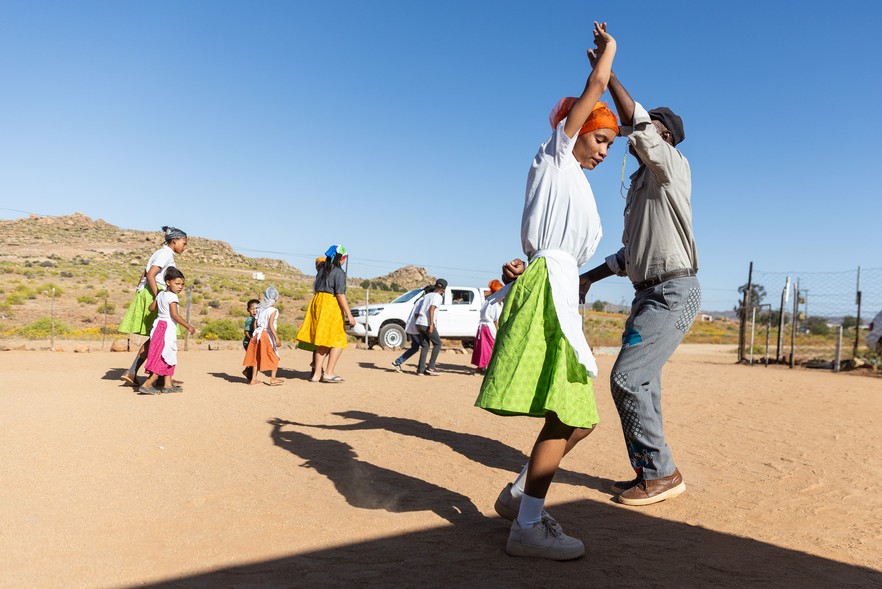How people in Namaqualand are keeping the Nama language alive
A radio station and a school teaching Nama hope to stop the language from going extinct
Bianché Twala practises statements in Afrikaans, Nama and English at the Aitsama Nama school.
More than anything else, Paul Dawid Vogelsang wants his language to be heard on radio, taught and to be spoken. Vogelsang, who is 64, speaks Nama, an indigenous Khoekhoe language that has faced declining usage over the last century.
There are no official statistics about how many people speak Nama in South Africa.
“I don’t want it to die out,” he says.
Some Khoe and San languages in South Africa have gone extinct already, such as ǀXam, which is the language of the national motto. Other languages, including Nǀuu, !Xun, Khwedam !Ora and Xiri (Korana and Griqua) have various levels of use, and some of these are highly endangered.
Originally from Luderitz, then Keetmanshoop in Namibia, Vogelsang moved to South Africa in 2006 to teach Nama at a school in Kuboes, a small town in the Richtersveld region of the Northern Cape.
Today, he lives in Port Nolloth, where he freelances as a Nama news translator for Namakwa FM (NFM), a community radio station that has been going for over 20 years.
The daily Nama news segment at 9pm is about five minutes long and Vogelsang is proud of his work.
“The most important thing for me is that I speak my language and the whole world hears it,” he says; and that people who don’t understand it “still hear it on the radio”.
“I won’t allow in my lifetime to let my language be taken away from me,” says Vogelsang.
Paul Dawid Vogelsang and his wife Fredricka live in Port Nolloth. Video: Ashraf Hendricks
NFM (98.1FM) has an hour-long show at noon on Mondays and Wednesdays hosted by Dina Christisaans in Nama, with an “our stories” segment.
“We realised that the Nama language is busy dying out …. its culture, food and traditions,” says Rose Giko, NFM program manager.
She says although the station broadcasts mainly in Afrikaans, followed by English and Xhosa, they broadcast in Nama “with the intention of preserving the language”.
“If you want to preserve a language, you do so by storytelling,” she says.
Most Nama people have moved to bigger towns where Afrikaans is preferred, and they have lost touch with their ancestral language. Giko says older generations didn’t pass on their stories to the youth.
NFM journalist Siphiwe Mgcongco (right) and Richard Theron at the NFM studio in Okiep, one of the only radio stations that has programming in Nama.
NFM’s footprint covers towns across the Richtersveld. Brunhild Strauss, NFM station manager, says though national broadcasts are available, people tune in to NFM for shows and news relevant to the community.
Strauss says that when they started out 21 years ago they made sure to cater for indigenous Nama speakers, “so that we can keep that language alive in this area”.
Nama speakers lived in Namibia, Botswana and the northern parts of South Africa. In colonial times, they and other indigenous people were almost exterminated. During apartheid, they were classified as “Coloured” and their language was derided and marginalised.
Nama was called “the savage language … Not to be used. Not to be spoken”, says Professor June Bam, director of the Centre for Education Rights and Transformation at the University of Johannesburg.
Bam says depriving people of their language robs them of their sense of belonging. Many indigenous names for plants, animals and mountains were erased, cutting the “umbilical cord” of the language to the land.
Vogelsang says Nama names are very descriptive.
There are four distinct clicks in Khoekhoe: (ǀ) dental, (ǃ) alveolar, (ǂ) palatal, (ǁ) lateral.
The colonisers struggled with these clicks and to pronounce the names, and so these were all changed. For instance, the Nama called the Orange River the !Garib (Great River).
Upington had the larger municipality name changed back to its original, ǁKharahais, but most Khoekhoe place names have not been restored.
Petrus Simboya runs the Aitsama Nama school in Concordia. “The goal of the Nama school is so that the indigenous Nama language, the culture and the traditions do not die out,” he says.
Petrus Simboya founded and runs the Aitsama Nama school in Concordia, a small independent Nama language and cultural school.
“The goal of the Nama school is so that the indigenous Nama language, the culture and the traditions, do not die out,” says Simboya.
The school runs three times a week in the grounds of Simboya’s home. He teaches learners to read and write in Nama, as well as Nama dancing and traditions. English and Afrikaans are also taught.
Simboya started the school in 2011. It has between 13 and 30 learners, aged all the way up to 70. They also have learners with disabilities. Simboya is blind.
Born in Pella, he learnt Nama from his parents and grandparents even though it was taboo to speak it during apartheid.
The Aitsama Nama school is a small independent Nama language and cultural school. English and Afrikaans are taught alongside Nama.
In 2018, the Nama language was introduced to two schools in the Northern Cape in Kuboes and Riemvasmaak, towns which retain their colonisers’ names.
In 2022, Angie Motshekga, then basic education minister, announced that Nama, San, Khoi and sign language were to be introduced to the curriculum.
The International Decade of Indigenous Languages (2022-2032), was declared by the United Nations General Assembly. UNESCO is supporting countries to develop their National Action Plans on indigenous languages.
Bam says that revitalising indigenous languages like Nama is a way of completing the “unfinished business of the Truth and Reconciliation Commission of South Africa”.
She says Nama should be an official language, sending a signal that the government recognises and acknowledges the genocide that happened in South Africa.
Petrus Simboya and one of his students, Bianché Twala, do the “Nama step”.
Support independent journalism
Donate using Payfast

Don't miss out on the latest news
We respect your privacy, and promise we won't spam you.
Next: Patients lie on the floor at Uitenhage hospital
Previous: In photos: Turner Adams’s tattooed body told more than one story
© 2024 GroundUp. This article is licensed under a Creative Commons Attribution-NoDerivatives 4.0 International License.
You may republish this article, so long as you credit the authors and GroundUp, and do not change the text. Please include a link back to the original article.
We put an invisible pixel in the article so that we can count traffic to republishers. All analytics tools are solely on our servers. We do not give our logs to any third party. Logs are deleted after two weeks. We do not use any IP address identifying information except to count regional traffic. We are solely interested in counting hits, not tracking users. If you republish, please do not delete the invisible pixel.

